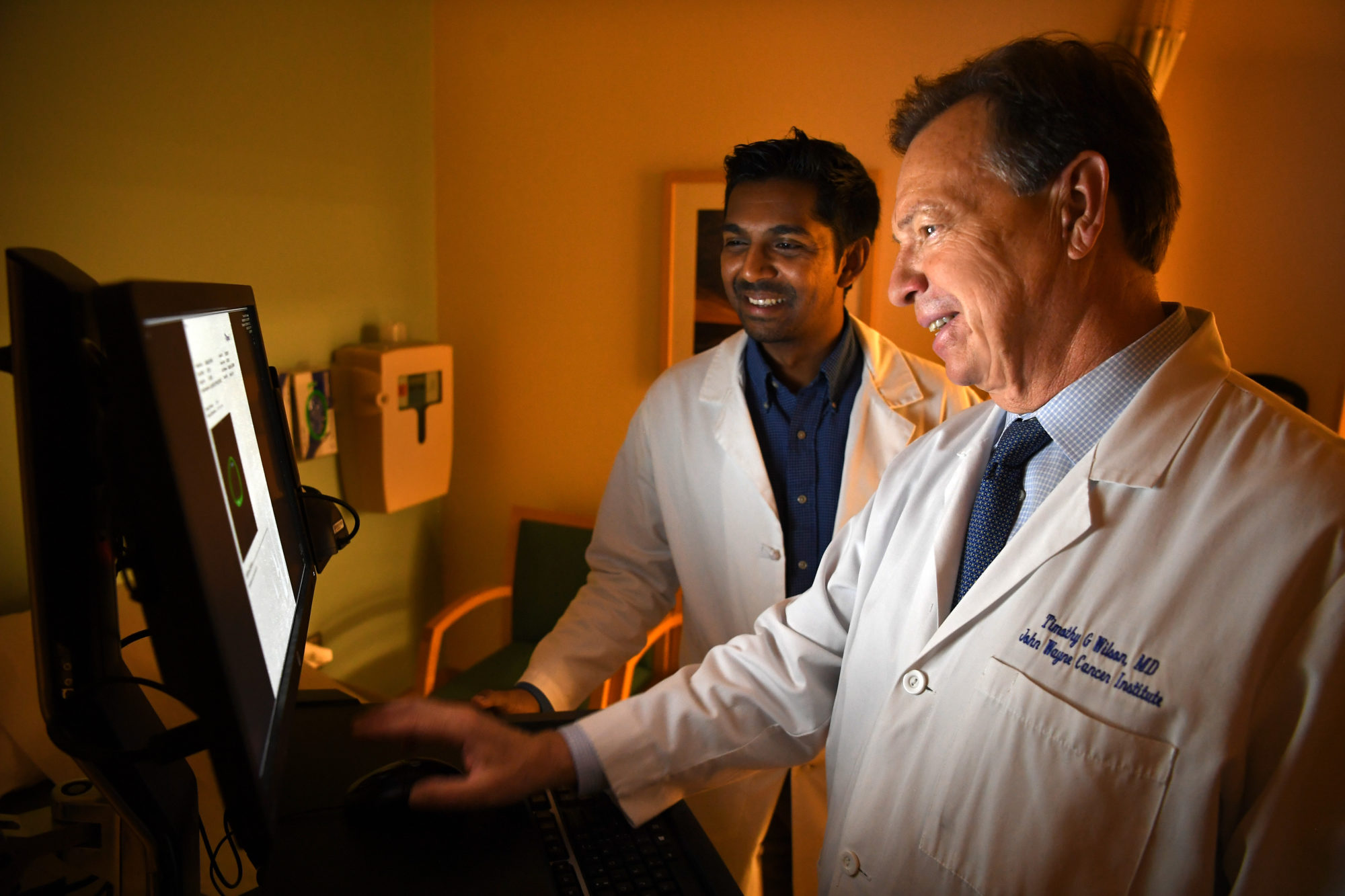
April is Testicular Cancer Awareness Month
Although it isn’t common, testicular cancer can be deadly, and it’s the most frequent cancer in males ages 15 to 35. The American Cancer Society estimates that 9,560 new cases will be diagnosed in the United States.
However, there is good news: If testicular cancer is found early, it can be treated successfully. In this post, you’ll find helpful information about the first signs of testicular cancer, risk factors, and how it’s treated.
Signs and Symptoms of Testicular Cancer
The first signs of testicular cancer include:
- A lump in the testicle or swelling
- Breast soreness or growth
- Pain in the lower back
- Early-onset puberty (males typically begin puberty between the ages of 9 and 14)
Types and Stages of Testicular Cancer
More than 90 percent of testicle cancers form in the germ cells, which are the cells that create sperm. There are two primary types of germ cell tumors:
- Seminomas: These tumors usually grow and spread slower than non-seminomas. Over 95 percent of seminomas occur in males between the ages of 25 and 45.
- Non-seminomas: These types of germ cell tumors mostly occur in men during the late teens or early 30s.
If you are diagnosed with testicular cancer, your urologic oncologist (surgeon) will determine its stage. Staging explains how much cancer is in the body and whether it has spread. Staging also helps your doctor plan the best course of treatment. Below you will find an overview of the stages of testicular cancer.
- pTis: This stage is considered a precancerous condition or carcinoma in situ (CIS). At this point, germ cells that look cancerous are present but not yet acting like cancer cells. CIS turns into cancer when the germ cells spread to areas of the testicle(s) where the cells are not usually found.
- pT1: The primary tumor is located in the testicle, which might include the rete testis. The cancer hasn’t grown into the lymphatic vessels or blood vessels of the testicles. It may have grown into the tunica albuginea (inner membrane layer surrounding the testicle). The tumor hasn’t spread to the tunica vaginalis (outer membrane layer surrounding the testicle).
- pT2: The tumor is in the testicle, which could include the rete testis. It has also grown into the lymph vessels or blood vessels. Or the cancer has grown into the hilar soft tissue (the fatty tissue next to the epididymis), the epididymis, or the tunica vaginalis (outer membrane layer surrounding the testicle). The tumor may have spread to the lymph or blood vessels.
- pT3: The cancer has spread into the spermatic cord, without or without growth to blood or lymph vessels.
- pT4: The tumor has spread into the scrotum, with or without growing to the lymph or blood vessels.
How is Testicular Cancer Treated?
Testicular cancer is treated in a few ways, and you may receive more than one type of treatment, depending on several considerations including personal factors, such as your age and preferences, the grade of the tumor, where it’s located, and if it affects other parts of your body. Below is an overview of the types of treatment for testicular cancer.
Surgery
Almost all cancerous testicles are removed with a type of surgery called radical inguinal orchiectomy. The urologic surgeons at the Saint John’s Cancer Institute use minimally-invasive procedures as often as possible. We specialize in laparoscopic and robotic-assisted techniques:
- Laparoscopic Surgery: Guided by a tiny video camera, surgeons make small incisions with thin surgical instruments. Benefits of the surgery include less pain and quicker recovery.
- Robotic-Assisted Surgery: Surgeons perform this minimally-invasive technique with the da Vinci Surgical System.
Radiation
Radiation therapy kills cancer cells or reduces their growth with high-energy rays. It’s like getting an x-ray, but more powerful. Radiation is mainly used to destroy cancer cells that have spread from the testicles to lymph nodes.
Chemotherapy
With chemotherapy, drugs are typically injected into a vein. They travel throughout the body to kill cancer that has spread. After a surgeon removes a cancerous testicle, chemo is also administered to decrease the chance of the cancer coming back.
What Happens If You Leave Testicular Cancer Untreated?
If testicular cancer is left untreated, it may spread to other parts of the body and may cause death. Click here to learn more about testicular cancer treatment options
When it comes to diagnosing and treating testicular cancer with a multi-disciplinary approach, our urologists are leaders in the field. We are committed to providing individualized treatment and the best care to patients diagnosed with testicular cancer. Meet our Urology and Urologic Oncology team!
This post provides testicular cancer facts including the disease’s symptoms and treatment options. For more information, please visit our Center for Urology and Urologic Oncology page
Contact us today to schedule an appointment.
Schedule an Appointment

